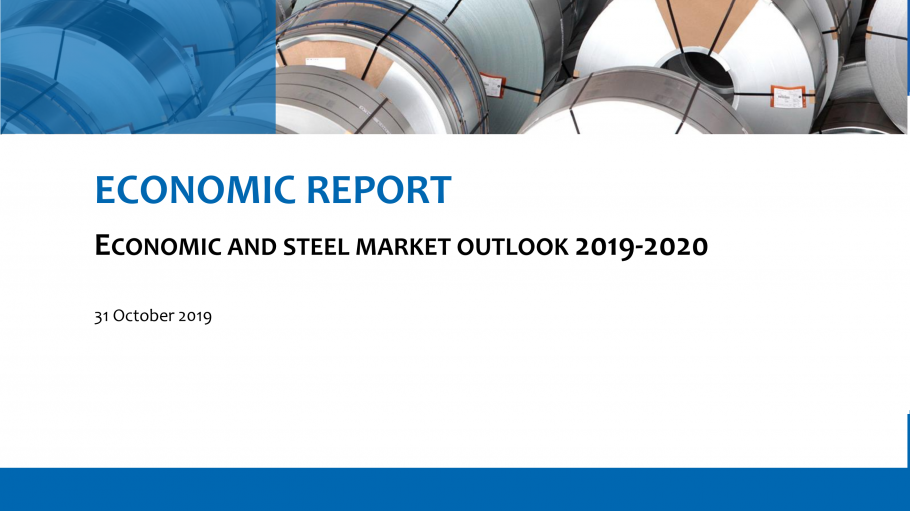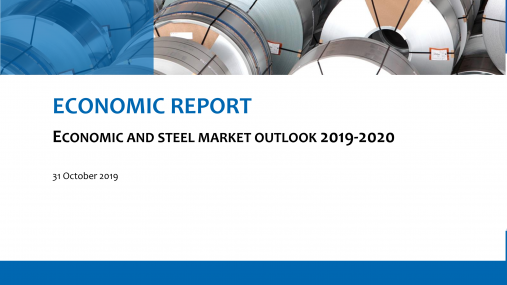
Publications » Economic and market outlook » Economic and steel market outlook 2019-2020, fourth quarter
Economic and steel market outlook 2019-2020, fourth quarter
Downloads and links
Recent updates

Apparent steel consumption fell by 7.7% year-on-year in the second quarter of 2019, after a drop of 1.6% in the first quarter. The negative trend in steel demand is the result of the ongoing slump in EU’s manufacturing sector due to weakened exports and investment that has become more pronounced during the second quarter of this year. Leading indicators forecast a continuation of the downturn for the remainder of the year, with no rebound before the second quarter of 2020.
The current downslide of the manufacturing sector in the EU is not likely to bottom out soon: escalating trade wars between the US and several of its main trading partners and persistent uncertainty regarding Brexit have the potential to severely impact global trade conditions, lead to a further deterioration in business sentiment and curb investment growth. In this scenario, the EU steel sector would be severely impacted, also having to cope with growing import distortions as well as higher volatility as a result of the increase of safeguard measures’ quota both this year and next.

Download this publication or visit associated links
Strasbourg, 17 December 2025 – The European Commission’s latest proposals on the Carbon Border Adjustment Mechanism (CBAM), unveiled today, correctly identify several loopholes that risk undermining its effectiveness, notably regarding EU exports, downstream sectors and circumvention practices. However, despite these laudable efforts, the measures put forward fail to deliver a comprehensive and durable response to carbon and jobs leakage, warns the European Steel Association (EUROFER).
A milestone occasion to quickly and effectively restore affordable electricity, to relaunch the
decarbonization and strengthen the international competitiveness of the European steel
industry.
Brussels, 02 December 2025 – Unchanged negative conditions – U.S. tariffs and trade disruptions, economic and geopolitical tensions, protracted weak demand and still high energy prices – continue to weigh on the European steel market. EUROFER’s latest Economic and Steel Market Outlook confirms for 2025 another recession in both apparent steel consumption (-0.2%, unchanged) and steel-using sectors (-0.5%, revised from -0.7%). A potential recovery is expected only in 2026 for the Steel Weighted Industrial Production index (SWIP) (+1.8%, stable) and for apparent steel consumption (+3%, slightly revised from +3.1%) – although consumption volumes would still remain well below pre-pandemic levels. Steel imports retained historically high shares (27%), while exports plummeted (-9%) in the first eight months of 2025.